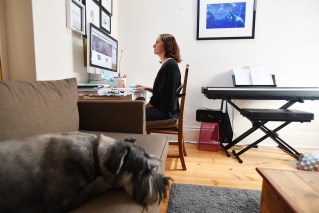PM rules out changes to COVID isolation rules

Prime Minister Anthony Albanese has knocked back a push from the NSW Premier to cut isolation requirements for people with COVID.
The expert health advice had not changed in relation to reducing the seven-day isolation period, Mr Albanese said, particularly given the increasing spread of the virus across Australia.
“The advice from the chief medical officer … was that now is certainly not the time for [the isolation period] to be reconsidered,” he told Adelaide radio 5AA on Monday.
“That’s something that health officials will continue to look at.”
It followed a call from NSW Premier Dominic Perrottet to review requirements for workers. Mr Perrottet said he had raised the issue with leaders at national cabinet.
“We need to look at isolation requirements in a way that still maintains downward pressure on our health system,” he told Sydney radio 2GB on Monday.
“As we move through the next phase of the pandemic we need to balance up the competing health issues – mental health issues, educational outcomes for our children, allowing people the opportunity to go to work.”
Victorian Premier Daniel Andrews agreed with Mr Albanese, and said it was common sense to maintain isolation requirements at seven days.
At national cabinet Mr Perrottet was not calling for an immediate change but at some point, Mr Andrews said.
“We will get to that point in future where we don’t have to isolate,” Mr Andrews said in Melbourne.
“But in the middle of winter that’s not the right thing to do right now.”
Elsewhere, access to COVID isolation payments will resume from later this week as health authorities try to cap the virus’s spread.
Workers who test positive for the virus and need to isolate from their jobs can receive the $750 payment, which will be available from Wednesday.
It follows the federal government agreeing to extend the isolation payments to the end of September after the original scheme expired on June 30.
Treasurer Jim Chalmers said the payments were reinstated following health advice on growing numbers of COVID-19 cases caused by a more infectious strain of the Omicron sub-variant.
He said the federal government would work collaboratively alongside the state and territory governments in helping to manage the third wave of Omicron cases.
The return of the isolation payments will come with a $780 million price tag, but the cost will be split among the federal, state and territory governments.
The government initially said it did not want to reintroduce the payments due to pressure on the federal budget.
Mr Albanese has not indicated whether the September 30 deadline for the payments would be extended.
Case numbers are continuing to increase as a result of the BA.4 and BA.5 strains of Omicron.
Over the weekend, more than 78,000 cases of COVID-19 were registered, with 107 deaths.
More than 337,000 active cases were reported, while 4700 people were in hospital across Australia with the virus.
Experts have said the peak of the latest wave of Omicron isn’t expected until at least the end of July.
With more hospitalisations expected in coming weeks, the Victorian government has put forward a more than $160 million package to respond to the wave.
The money will be used to fund 400 additional specialist staff across 12 major hospitals in Melbourne and Geelong.
Hospitals have endured a rise in cases accompanied by staff shortages due to healthcare workers being sick with the virus, with more than 10,000 staff off sick in the first week of July alone.
There’s been a 99 per cent rise in hospitalisations with COVID in Victoria since June 22.
In NSW, where more than 2000 people are in hospital with the virus, nurses at Sydney’s Blacktown and Westmead hospitals walked off the job on Monday. They were protesting what they claim is “chronic understaffing” in NSW hospitals.
Queensland’s hospital system is also feeling the pinch, with nearly 2500 staff off with the virus.
State Health Minister Yvette D’Ath said 6-7 per cent of Queensland health workers were on sick leave, about double the usual average.
“When you look at the beds being taken up with COVID and the reduced staffing, you get an idea of the pressure being faced across our hospital systems,” she said on Monday.
More than 900 beds in Queensland are being used for patients who have either COVID-19 or influenza.
In South Australia, virus hospitalisations rose to 306 on Monday. They are up more than 70 since last Thursday, and above 300 for the first time.
Western Australia’s COVID hospital admissions are also at a record high, while Health Minister Amber-Jade Sanderson said about 1500 health workers were out of action due to the virus.
Australia’s latest 24-hour COVID data
NSW: 9761 cases, five deaths, 2169 in hospital with 64 in ICU
Victoria: 10,251 cases, 18 deaths, 821 in hospital with 35 in ICU
Queensland: 6682 cases, no deaths, 914 in hospital with 18 in ICU
Tasmania: 1411 cases, four deaths, 44 in hospital, two in ICU
ACT: 887 cases, no deaths, 171 in hospital with five in ICU
South Australia: 4053 cases, two deaths, 306 in hospital with 11 in ICU
Western Australia: 5514 cases, two deaths, 411 in hospital with 19 in ICU
-with AAP








